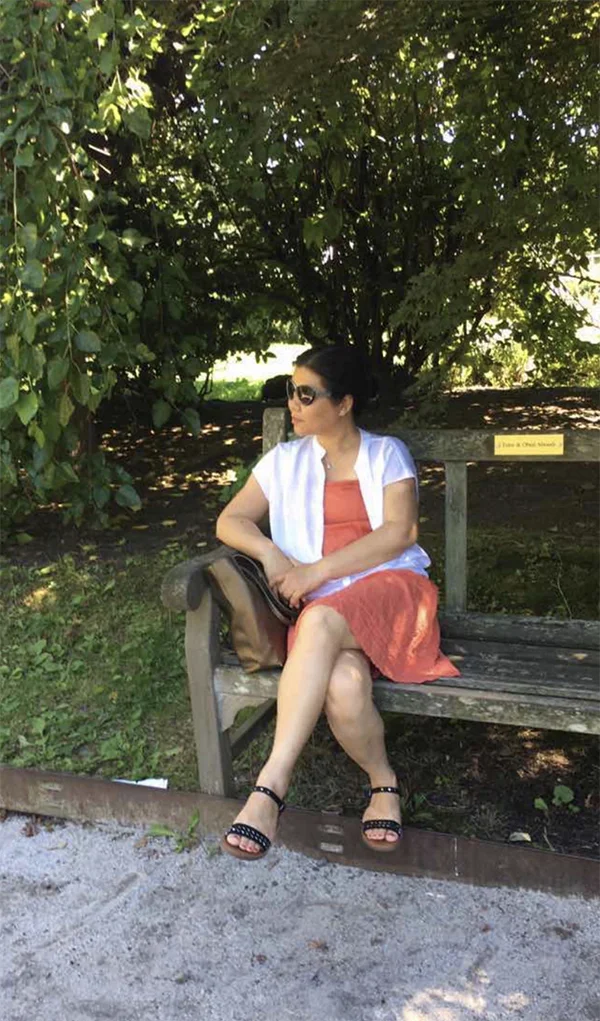Holly's Story
"I could see things that I couldn’t see before. That’s how I knew that my vision was coming back."
Holly Li, 50, of Brooklyn, New York, started to notice problems with her vision at the end of last April.
“I suddenly realized that my vision was terrible…I couldn’t see traffic lights when I was on the street. I could occasionally see something, but it was very blurry. Very, very blurry.”
Holly works as an export assistant manager for a freight forwarding company. Her job requires reading from a computer screen all day, so knew she needed to get help sooner rather than later. But finding the right eye doctor wasn’t easy. After bouncing from referral to referral around the city, a doctor at a local New York hospital finally diagnosed her with a tumor—a vascular hemangioma in the benign lesion—behind her left eye. The diagnosis felt scary: this type of eye tumor could lead to blindness, Holly learned. Her doctor planned a surgery to address the tumor, and Holly hoped it would stop the vision loss. She underwent a craniotomy, which involved going through her temple to access her optic nerve but unfortunately, they were unable to remove the tumor.
After the surgery that was meant to help her, Holly started suffering from light sensitivity and getting bad headaches. It was so bad, she couldn’t bear to feel the wind on her face when stepping outside.
When she brought these issues to her care team, they gave her steroids. But the relief was only temporary—in reality, Holly knew that her vision was still getting worse. “At that time, I was very hopeless,” Holly says. “I thought I was not going to get my eyesight back.”
When Holly’s doctor suggested a second surgery, she felt hesitant and started looking for other options. While she was searching for a new doctor, Holly’s father was healing at NewYork-Presbyterian Brooklyn Methodist Hospital from his own surgery. The nurses there told Holly about NewYork-Presbyterian’s incredible neurosurgery team and encouraged her to reach out for a second opinion. “I looked at the [NewYork-Presbyterian] website and saw Dr. Ramakrishna’s information and also his patient reviews,” Holly explains. “And I said: ‘Wow, this is an amazing doctor.’”
Holly soon had an appointment with Dr. Rohan Ramakrishna, Chief of Neurological Surgery at NewYork-Presbyterian Brooklyn Methodist Hospital, Professor of Neurological Surgery at Weill Cornell Medicine, and Co-Director of the Rhodes Center for Glioblastoma and Brain Metastases programs, who agreed to take on her unique case.
“Holly’s tumor is very rare, and in this location [the orbital apex], extraordinarily challenging to treat because one, it’s surrounded by all the eye muscles and two, the orbital apex is a small, difficult-to-access space,” says Dr. Ramakrishna. “Moreover, the optic nerve, which carries visual information to the brain, is also very sensitive, so we have to be particularly cautious when operating in this area…Usually, while we hope to always improve vision in these cases, our main goals are to keep the vision they have and prevent it from getting worse.”
After meeting Dr. Ramakrishna in person, Holly was confident in her decision to switch her doctor and hospital. She also spoke with the surgeons who’d be collaborating with Dr. Ramakrishna in the operating room: Dr. Kyle Godfrey, an oculoplastic surgeon at NewYork-Presbyterian/Weill Cornell Medical Center, and Dr. Abtin Tabaee, an otolaryngology surgeon at NewYork-Presbyterian/ Weill Cornell Medical Center. Since the orbital apex is an extremely tricky area to get to, Holly’s surgery required their combined expertise to target the tumor safely, with Dr. Godfrey working around the eye portal, Dr. Tabaee working through the nose portal, and Dr. Ramakrishna resecting the tumor itself.
“I met with them one by one,” Holly remembers. “They explained everything to me in detail and explained to me why they wanted to do it this way. But, of course, the benefits were greater than the risks, so I had to go for it. They acted very fast, very efficient, and arranged everything very quick.”
They scheduled the procedure within just a couple of weeks after her initial appointment, and Holly underwent surgery in September of 2023.
“It was minimally invasive,” Dr. Ramakrishna explains. “We went through her nose and around the eye and took the lesion out. She was back to 20/20 vision just a few weeks later.”
When Holly was still in the recovery room and first opened her eyes, she could already see much better, and in her own words: “I could see things that I couldn’t see before. That’s how I knew that my vision was coming back.”
Now, Holly is grateful to have her vision back. She enjoys taking walks outside again, a simple pleasure she didn’t have when she was ultra-sensitive to light and wind. She’s determined to make sure that anyone else suffering from this rare orbital tumor knows that they’re not alone and that NewYork-Presbyterian can help.
Dr. Ramakrishna is also in awe of how fast she’s recovered. “She’s had a pretty incredible outcome from a visual recovery standpoint,” he says. “And if you look at her, you can’t even tell that she’s had an operation….to see a visual recovery like this is pretty extraordinary.”




